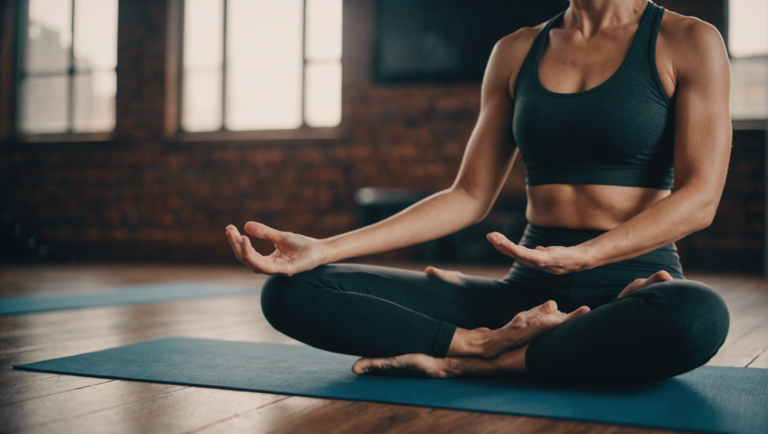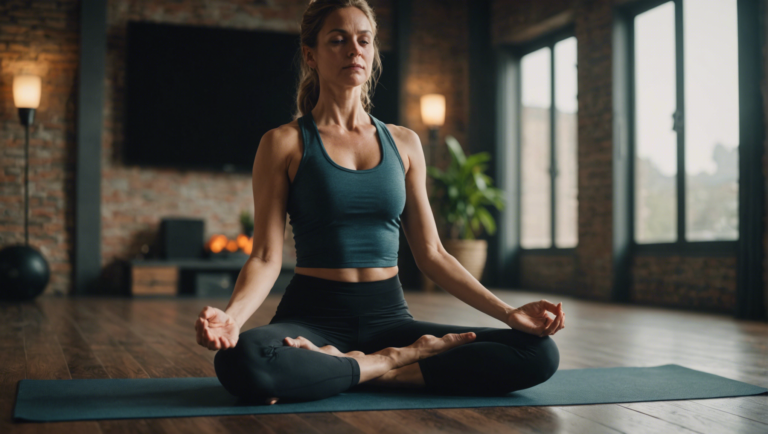Origins And History: Where Is Yin Yoga From?
Origins and History: Where is Yin Yoga From?
The Deep Roots of Yin Yoga: Tracing Its Historical Journey
The ancient practice of Yin Yoga, characterized by its slow-paced style and meditative focus, presents a fascinating tapestry woven with threads of traditional Chinese philosophy, Indian yoga practices, and contemporary Western insights. Delving into its origins reveals a rich history that spans centuries and continents, shedding light on its development and the philosophy it embodies.
The Chinese Influence and Taoist Traditions
At the heart of Yin Yoga’s philosophy and practice is the influence of Taoism, an ancient Chinese philosophical tradition that emphasizes living in harmony with the Tao, or the fundamental nature of the universe. This tradition introduced the concept of Yin and Yang, opposing but complementary forces believed to be present in everything. Yin is the stable, unmoving, hidden aspect of things; Yang is the changing, moving, revealing aspect. In the context of yoga, Yin Yoga focuses on the deeper tissues of the body, such as the ligaments, joints, and bones, as well as the energetic channels, fostering an inward, reflective practice.
The Indian Connection: Yoga’s Vast Legacy
While Yin Yoga draws heavily on Chinese Taoist practices, its roots also extend deeply into the fertile soil of Indian yoga traditions. The practice of yoga itself, with its asanas (poses) and pranayama (breathwork), has been a cornerstone of spiritual, physical, and mental development in India for thousands of years. Yin Yoga incorporates these aspects but emphasizes holding poses for longer periods, typically three to five minutes, to work the body’s "yin" tissues. This approach mirrors the meditative focus and slow movements found in traditional Hatha Yoga, yet it is distinct in its method and objectives.
The Synthesis by Paulie Zink
The bridge between the ancient Eastern traditions and the modern Western practice of Yin Yoga was built by Paulie Zink, a martial arts champion and Taoist yoga teacher. In the late 20th century, Zink began teaching a yoga style that was deeply influenced by his extensive training in martial arts and Taoist practices. His teachings emphasized the importance of fluidity, flexibility, and yielding—qualities associated with the yin aspect of the Taoist philosophy. It was Zink who first articulated the principles of what would come to be known as Yin Yoga, blending the postural practices of Indian yoga with the Taoist concepts of energy flow and balance.
The Contribution of Sarah Powers and Paul Grilley
While Paulie Zink laid the foundation, Yin Yoga was further developed and popularized in the West by Sarah Powers and Paul Grilley. They were instrumental in synthesizing Zink’s teachings with more detailed anatomical and energetic insights, making the practice accessible and understandable to a broader audience. Grilley, in particular, emphasized the anatomical aspects of Yin Yoga, teaching students how individual differences in bone structure and connective tissue require a personalized approach to yoga. Powers added to this by incorporating Buddhist mindfulness practices into Yin Yoga, offering a path to inner peace and self-awareness through the meditative aspects of the practice.
The Ongoing Evolution of Yin Yoga
Today, Yin Yoga continues to evolve, integrating insights from modern medicine and psychology with its ancient roots. Its growth reflects an increasing appreciation for its benefits, including stress reduction, improved flexibility, and enhanced energetic flow. As practitioners and teachers explore and expand on its principles, Yin Yoga remains a dynamic practice that encourages introspection, patience, and a deep, meditative connection to the self.
This exploration into the origins and history of Yin Yoga reveals not just the geographical journey of a practice, but the philosophical underpinnings that make it a unique and transformative approach to physical and spiritual well-being. By understanding where Yin Yoga comes from, practitioners can deepen their connection to the practice, acknowledging the ancient wisdom that informs its methods while contributing to its ongoing evolution.
The Philosophical Roots of Yin Yoga in Taoism and Traditional Chinese Medicine
Yin Yoga, a practice that emphasizes stillness and the deep, meditative holding of postures, has seen a surge in popularity in recent decades. However, fewer may know that the roots of Yin Yoga are deeply intertwined with the ancient Chinese philosophies of Taoism and the principles of Traditional Chinese Medicine (TCM). This connection not only enriches the practice but also provides a profound depth of healing and mindfulness, bridging the gap between physical exercise and spiritual tranquility.
The Taoist Influence on Yin Yoga
The Taoist philosophy, with its emphasis on living in harmony with the Tao, or the fundamental nature of the universe, plays a crucial role in the conceptualization of Yin Yoga. According to Taoism, everything in the universe is composed of two opposing yet complementary forces: Yin and Yang. Yin represents the stable, unmoving, hidden aspects of things; Yang represents changing, moving, revealing qualities. Yin Yoga, therefore, focuses on the Yin aspects of being—stillness, coolness, and inward reflection—counterbalancing the Yang nature of our often hectically paced lives.
This philosophy manifests in the practice through long-held, passive postures focusing on the lower parts of the body which are rich in connective tissues like tendons, fascia, and ligaments. These areas are considered to have a more Yin quality due to their density and depth. By adopting a more receptive, yielding approach to these areas, Yin Yoga not only enhances physical flexibility but also fosters a deeper internal exploration and a meditative state of mind.
Traditional Chinese Medicine and Yin Yoga
The integration of Traditional Chinese Medicine (TCM) principles with Yin Yoga adds another layer of depth to the practice. TCM operates on the belief that Qi, or vital energy, flows through the body along pathways known as meridians. Health issues arise when this flow is blocked or unbalanced. Yin Yoga poses are believed to stimulate these meridians, encouraging the smooth flow of Qi and thus aligning with the TCM goal of harmonizing the body’s energy.
Yin Yoga’s emphasis on stillness and holding poses for extended periods is thought to aid in the deep stretching of connective tissues, enhancing the circulation of Qi and blood. This not only helps to maintain the agility of the joints and tissues but also supports organ health. The targeted approach of Yin Yoga in accessing these meridians mirrors the TCM understanding of health and well-being as a state of balance and flow within the body’s energetic landscape.
The Synergy of Yin Yoga, Taoism, and Traditional Chinese Medicine
The fusion of Yin Yoga with Taoist and TCM principles offers a holistic practice that transcends mere physical exercise. This practice stands as a testament to the value of integrating mindfulness, body awareness, and energetic balance. It serves not only as a pathway to improved physical health but as a deeply spiritual journey toward inner peace and harmony with the natural world.
Moreover, the synthesis of these elements in Yin Yoga supports the contemporary quest for wellness in a holistic, nuanced manner, acknowledging the interconnectedness of mind, body, and spirit. It offers a powerful antidote to the rigors of modern life, promoting relaxation, stress reduction, and a deepened sense of self-awareness.
Unlocking the Healing Potential of Yin Yoga
As practitioners delve into the quiet, reflective practice of Yin Yoga, they engage with a tradition enriched by centuries of philosophical and medicinal wisdom. This practice offers a unique way to explore the landscape of the self, encouraging a journey inward to tap into the body’s natural healing capabilities and to realign with the rhythmic cycles of the natural world. Through the lens of Taoism and TCM, Yin Yoga emerges not merely as a form of physical exercise but as a profound spiritual and therapeutic discipline, offering a path to tranquility, health, and balance in the bustling modern age.
Key Figures and Teachers in the Development of Yin Yoga
The Pioneers Behind Yin Yoga
Yin Yoga, a practice characterized by its slow-paced nature, allowing deep tissue stretching and mindful stillness, owes its development to key figures whose teachings have profoundly shaped its principles. This form of yoga harnesses the power of stillness and patience, offering a counterbalance to the dynamic and muscular (yang) styles of yoga that dominate the Western practice. Understanding the influencers behind this practice not only honors their contributions but also provides insight into the essence and depth of Yin Yoga.
Paulie Zink: The Foundational Figure
The roots of Yin Yoga can be traced back to Paulie Zink, a martial arts champion and Taoist yoga teacher. Zink’s approach was deeply influenced by Taoist concepts, emphasizing the importance of cultivating balance and flexibility in the body and mind. His teachings laid the groundwork for Yin Yoga, incorporating postures that were designed to improve the flow of chi (qi) and enhance inner tranquility. Zink’s methodology was revolutionary in that it introduced the Western world to a yoga practice that was not predominantly active but rather meditative and inward-focused.
Sarah Powers: Integrating Mindfulness and Psychology
Building upon the foundation laid by Zink, Sarah Powers introduced aspects of mindfulness and psychology into Yin Yoga. Powers, an influential figure in modern yoga, recognized the potential for Yin practice to go beyond physical postures and tap into the mental and emotional dimensions of wellness. She has been pivotal in integrating insights from psychology into Yin Yoga, emphasizing the practice as a means of exploring the inner self and processing emotional blockages. Powers’ teachings have made Yin Yoga not just a physical practice but a holistic journey towards self-discovery and healing.
Bernie Clark: The Educator and Author
Bernie Clark is another central figure in the popularization and development of Yin Yoga. Clark has demystified the practice for Western audiences through his extensive writings and teachings. His detailed analysis of the anatomical and physiological aspects of Yin Yoga has made the practice accessible and understandable to practitioners and instructors alike. Clark’s contribution lies in his ability to blend traditional Eastern wisdom with contemporary scientific understanding, making Yin Yoga a well-rounded and deeply therapeutic practice.
Insights Beyond the Mat
The influence of these key figures extends beyond the specific postures and practices of Yin Yoga; it touches upon the broader philosophy of balance, mindfulness, and inner exploration. Their teachings underscore the importance of slowing down, paying attention to the present moment, and listening to the body’s subtle signals. This approach stands in contrast with much of modern life’s fast pace, offering a sanctuary for deep healing and contemplation.
The Evolution of a Practice
As Yin Yoga continues to evolve, the contributions of its key figures remain at its heart. They have provided a framework that is both adaptable and deeply rooted in tradition. Practitioners of Yin Yoga today benefit from a rich lineage of knowledge and technique, one that emphasizes the interconnectedness of mind, body, and spirit. Through their pioneering efforts, Zink, Powers, and Clark have created a legacy that will continue to influence and shape the practice of Yin Yoga for generations to come.
Engaging with Yin Yoga Today
For those interested in exploring Yin Yoga, engaging with the teachings of its key figures is a great starting point. Their books, videos, and classes provide invaluable insights into the practice’s nuances, offering guidance for both beginners and seasoned practitioners. As Yin Yoga grows in popularity, the contributions of its founding figures ensure that the practice remains grounded in its original principles even as it adapts to meet the needs of today’s practitioners.
Understanding the key figures behind Yin Yoga enriches the practice, connecting contemporary practitioners with the rich tapestry of knowledge and tradition that Yin Yoga represents. Their contributions underscore a broader message of balance and mindfulness, principles that are increasingly relevant in our fast-paced world.
Comparative Analysis: Yin Yoga Versus Other Forms of Yoga
Yoga has evolved over thousands of years, branching into various styles that cater to different preferences and needs. Among these, Yin Yoga stands out for its unique approach, focusing on passive stretches and mindfulness. This article provides a detailed comparison between Yin Yoga and other popular forms of yoga, offering insights into their origins, methodologies, and benefits to help practitioners choose the form that best aligns with their objectives.
The Essence of Yin Yoga
Yin Yoga, originating in the late 20th century, emphasizes stillness and the deep stretching of connective tissues around the joints. Unlike its more dynamic counterparts, Yin Yoga consists of a series of passive floor poses held for extended periods, typically three to five minutes each. This practice encourages mindfulness, allowing practitioners to explore their inner landscapes through meditation and breath work. Its roots can be traced back to Taoist concepts, integrating ancient wisdom with modern understanding of the body’s anatomy and energy channels.
Dynamic Practices: Ashtanga and Vinyasa Yoga
Ashtanga Yoga: A Rigorous Discipline
Ashtanga Yoga, a methodical sequence of poses, is defined by its vigorous style and precise movements. Developed in the early 20th century by K. Pattabhi Jois, it involves synchronizing breath with a progressive series of postures—a process producing intense internal heat and purifying sweat that detoxifies muscles and organs. The result is improved circulation, a light and strong body, and a calm mind. This form demands discipline and is best suited for those who thrive on routine and physical challenges.
Vinyasa Yoga: The Flow of Movement
Vinyasa Yoga, known for its fluid transitions, is often considered a moving meditation. The term "vinyasa" refers to the alignment of movement and breath, which creates a dynamic flow from one pose to another. This style does not adhere to a fixed sequence, allowing instructors the freedom to tailor classes. Vinyasa appeals to individuals seeking variety and those who wish to balance strength-building with flexibility. It’s an invigorating practice that teaches grace and perseverance.
Gentle Practices: Hatha and Restorative Yoga
Hatha Yoga: The Foundation of Physical Practices
Hatha Yoga represents the physical aspect of yoga practice, focusing on postures (asanas) and breath control (pranayama) to prepare the body for deeper spiritual practices like meditation. It is often slower-paced and less strenuous than other forms, making it suitable for beginners and those who prefer a more meditative approach to exercise. Hatha Yoga classes offer an opportunity to stretch, unwind, and release tension, thereby fostering physical and mental balance.
Restorative Yoga: Deep Relaxation and Healing
Restorative Yoga is characterized by its emphasis on relaxation and healing. With the aid of props such as blankets, bolsters, and blocks, poses are held for an extended period, often up to 10 minutes, to encourage complete relaxation and stress release. This form is particularly beneficial for those recovering from illness or injury and individuals seeking to alleviate the pressures of modern life. It promotes deep rest, rejuvenation, and a tranquil mind.
Choosing the Right Path
When comparing Yin Yoga with other forms, it’s evident that each style offers unique benefits tailored to different needs and preferences. Yin Yoga’s meditative approach and focus on flexibility and mindfulness contrast with the physical intensity and discipline of Ashtanga or the dynamic flow of Vinyasa. Similarly, while Hatha provides a comprehensive foundation in yoga practice, offering a balance of strength and flexibility, Restorative Yoga delves deeply into relaxation and healing.
The choice between Yin Yoga and other yoga forms depends on individual goals, physical condition, and personal preference. Whether seeking physical improvement, emotional healing, or spiritual growth, there’s a yoga style that resonates with every practitioner’s path. Thus, exploring and experiencing different forms can be profoundly enriching, leading to greater awareness and harmony within oneself and the broader tapestry of yoga traditions.
The Impact of Yin Yoga on Mental and Physical Health
Yin Yoga, often overshadowed by its more dynamic counterparts in the yoga world, holds a unique position due to its profound impact on both mental and physical health. This gentle, meditative form of yoga emphasizes holding poses for extended periods, typically three to five minutes, targeting the deep connective tissues of the body. Unlike more active yang styles of yoga, which focus on muscle strength and stamina, Yin Yoga offers a slower pace, encouraging practitioners to find stillness, leading to a myriad of health benefits.
Exploring the Mental Health Benefits of Yin Yoga
One of the most significant impacts of Yin Yoga is its ability to bolster mental health. In a world where the pace of life seems to only accelerate, Yin Yoga serves as a counterbalance, offering moments of stillness and introspection. This practice encourages mindfulness and meditation, allowing individuals to turn their focus inward and practice being present. The sustained poses and quiet environment foster a sense of calm and reduce stress levels, which can be particularly beneficial for those grappling with anxiety or depression.
Research supports the notion that Yin Yoga can significantly affect mental well-being. By engaging the parasympathetic nervous system, also known as the "rest and digest" system, Yin Yoga helps to lower stress hormones, such as cortisol, promoting relaxation and a sense of peace. This stress reduction is not merely subjective but has been observed in clinical studies, illustrating Yin Yoga’s potential as a therapeutic tool for mental health issues.
The Physical Health Advantages of Practicing Yin Yoga
While the mental health benefits are substantial, Yin Yoga also offers a range of physical health advantages. The practice’s focus on deep connective tissues—ligaments, bones, joints, and fascia—helps improve joint mobility and flexibility. Unlike exercises that target muscle strength, the slow and steady stretches of Yin Yoga allow for a deeper release, potentially alleviating chronic pain and improving range of motion.
Moreover, Yin Yoga’s emphasis on relaxation and deep, mindful breathing can enhance circulation and reduce blood pressure, contributing to overall cardiovascular health. The gentle but sustained pressure on various body parts also stimulates the flow of synovial fluid, nourishing joints and improving their functionality. This aspect of Yin Yoga can be particularly beneficial for aging individuals or those recovering from joint injuries.
The Synergy Between Mental and Physical Wellbeing Through Yin Yoga
The interplay between mental and physical health is undeniable, and Yin Yoga adeptly bridges this connection. The mental clarity and reduced stress levels achieved through Yin Yoga not only enhance emotional well-being but can also lead to better physical health outcomes. Stress is a known exacerbator of many physical ailments, from heart disease to autoimmune disorders. By mitigating stress, Yin Yoga indirectly contributes to the alleviation of these conditions.
Moreover, the discipline and mindfulness cultivated in Yin Yoga can translate into healthier lifestyle choices, further bridging the gap between mental and physical health. Practitioners often report improved sleep patterns, better eating habits, and a more profound sense of body awareness after integrating Yin Yoga into their routines. These changes, in turn, contribute to a healthier, more balanced life.
Embracing Yin Yoga for Holistic Health
Both anecdotal evidence and scientific research underscore the positive impact of Yin Yoga on both mental and physical health. Its gentle approach provides a much-needed counterbalance to the high-energy, high-stress lifestyles common today. By promoting mindfulness, flexibility, and stress reduction, Yin Yoga offers a holistic path to well-being that is accessible to practitioners of all levels and backgrounds.
The synthesis of mental calm and physical healing potential makes Yin Yoga a compelling practice for those looking to enhance their overall health. As more individuals seek out ways to manage stress and foster physical health, Yin Yoga stands out as a practice uniquely positioned to meet these needs, offering a serene oasis in the midst of life’s chaos.
Conclusion
Tracing the journey of Yin Yoga from its ancient roots to its present-day significance reveals a fascinating story of evolution, adaptation, and revitalization. This exploration into its origins and history highlights not just a form of physical exercise but a profound philosophical and healing practice that has traversed centuries and cultures. Delving into the philosophical underpinnings of Yin Yoga, we uncover its deep connections with Taoism and Traditional Chinese Medicine (TCM), illustrating how these ancient wisdom traditions have shaped its principles and practices. The emphasis on balance, harmony, and the flow of Qi (vital energy) in Yin Yoga is a direct reflection of these philosophical and medicinal frameworks, which prioritize the holistic health of the body and the mind.
The narrative of Yin Yoga is incomplete without acknowledging the pivotal roles played by key figures and teachers who have contributed to its development and proliferation across the globe. These individuals, through their dedicated practice, teaching, and scholarly work, have been instrumental in adapting and interpreting Yin Yoga for contemporary needs while remaining faithful to its traditional roots. Their efforts have not only preserved the essence of Yin Yoga but have also made it accessible and relevant to a global audience, thereby ensuring its continued growth and evolution.
In contrasting Yin Yoga with other forms of yoga, we gain insights into its unique position within the broader yoga landscape. Unlike the more dynamic and muscular-focused practices such as Vinyasa or Ashtanga, Yin Yoga emphasizes stillness, depth, and the subtle stretching of connective tissues. This comparative analysis highlights the complementary nature of Yin Yoga and its role in providing balance within the diverse spectrum of yoga practices. By offering a counterpoint to the yang-dominated forms of exercise in many cultures, Yin Yoga serves as a vital practice that encourages introspection, mindfulness, and deep physical release.
The impact of Yin Yoga on mental and physical health cannot be overstated. Studies and personal testimonies attest to its efficacy in enhancing flexibility, reducing stress levels, and promoting emotional well-being. Through its gentle yet profound approach to body-mind integration, Yin Yoga offers a sanctuary for healing and rejuvenation in a fast-paced world. Its growing popularity is a testament to its effectiveness in addressing the contemporary challenges of stress, anxiety, and physical rigidity, making it a pivotal practice for holistic health and wellness.
Yin Yoga, with its rich heritage, profound philosophical foundations, and undeniable health benefits, stands as a beacon of balance, healing, and contemplation in the modern age. Its journey from the ancient Taoist concepts to the yoga mats of today embodies the timeless quest for harmony between the yin and yang aspects of our existence. As we continue to navigate the complexities of contemporary life, Yin Yoga offers not just a practice but a pathway to inner peace, physical health, and spiritual growth. Through the dedicated efforts of its teachers and the experiences of its practitioners, Yin Yoga transcends its origins to become a global practice that enriches lives and fosters a deeper connection with the self and the universe.
The exploration of Yin Yoga’s origins, principles, key figures, comparative significance, and impact on health does more than chart the course of a physical and spiritual practice. It beckons us to embrace the quiet power of stillness, to listen intently to our inner selves, and to find balance in a world that often seems overwhelmingly yang-dominant. In embracing the gentle wisdom of Yin Yoga, we find not only a method of exercise but a profoundly transformative practice that invites us to reflect, heal, and grow in ways that resonate deeply with the rhythms of life itself.



